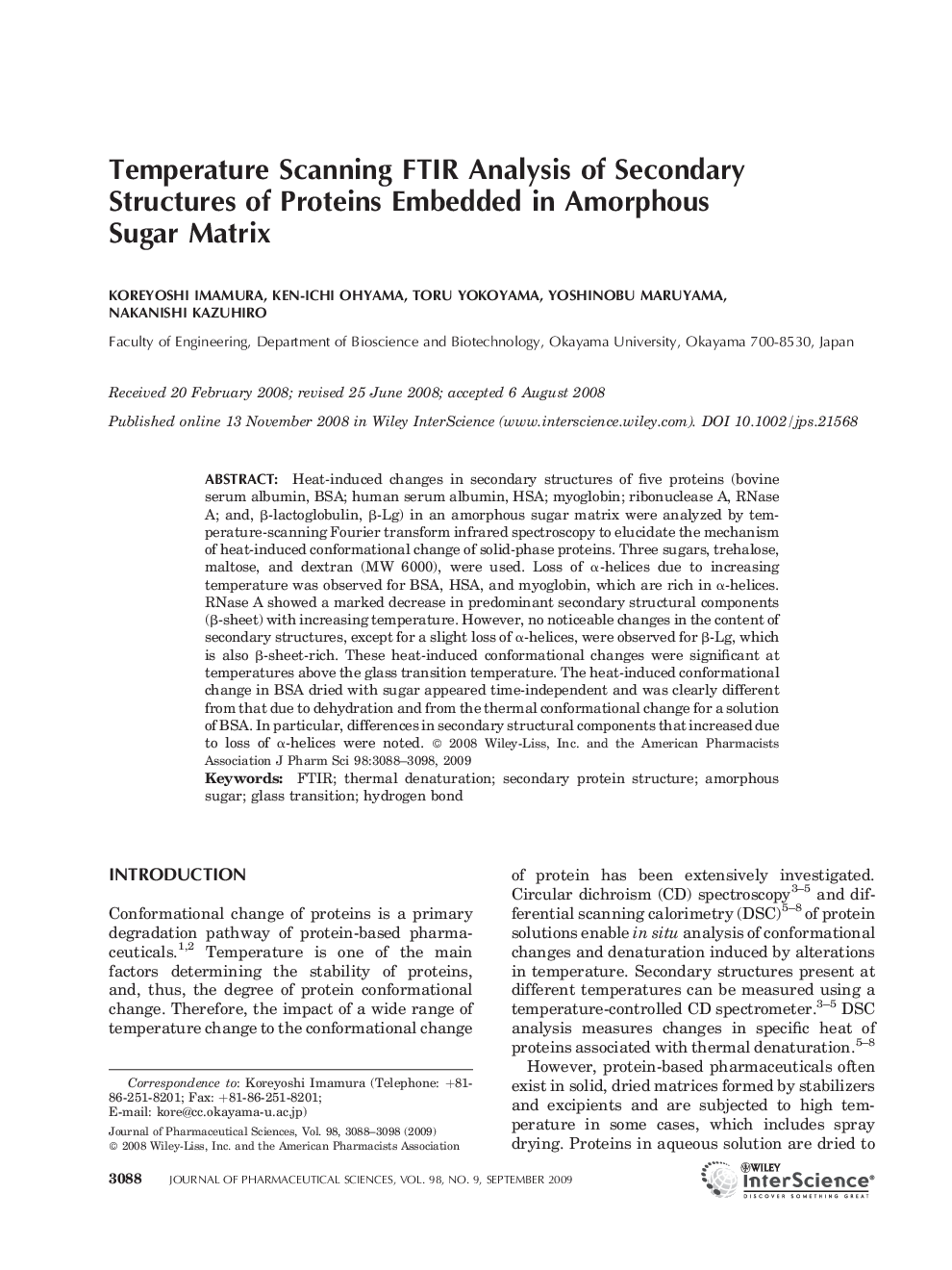| Article ID | Journal | Published Year | Pages | File Type |
|---|---|---|---|---|
| 2486823 | Journal of Pharmaceutical Sciences | 2009 | 11 Pages |
Heat-induced changes in secondary structures of five proteins (bovine serum albumin, BSA; human serum albumin, HSA; myoglobin; ribonuclease A, RNase A; and, β-lactoglobulin, β-Lg) in an amorphous sugar matrix were analyzed by temperature-scanning Fourier transform infrared spectroscopy to elucidate the mechanism of heat-induced conformational change of solid-phase proteins. Three sugars, trehalose, maltose, and dextran (MW 6000), were used. Loss of α-helices due to increasing temperature was observed for BSA, HSA, and myoglobin, which are rich in α-helices. RNase A showed a marked decrease in predominant secondary structural components (β-sheet) with increasing temperature. However, no noticeable changes in the content of secondary structures, except for a slight loss of α-helices, were observed for β-Lg, which is also β-sheet-rich. These heat-induced conformational changes were significant at temperatures above the glass transition temperature. The heat-induced conformational change in BSA dried with sugar appeared time-independent and was clearly different from that due to dehydration and from the thermal conformational change for a solution of BSA. In particular, differences in secondary structural components that increased due to loss of α-helices were noted. © 2008 Wiley-Liss, Inc. and the American Pharmacists Association J Pharm Sci 98:3088–3098, 2009
